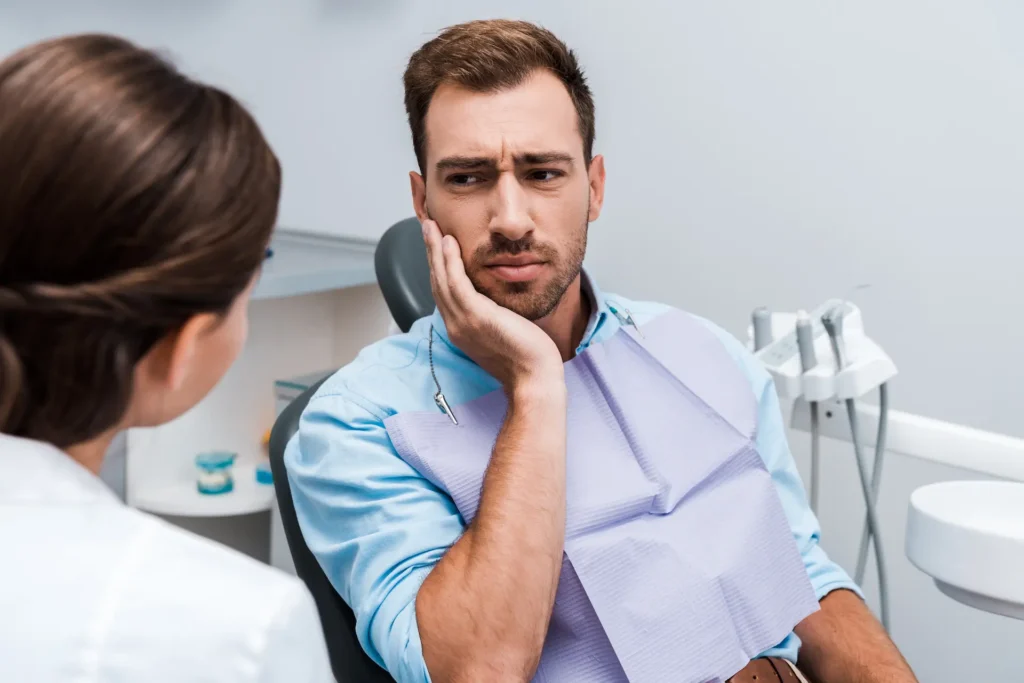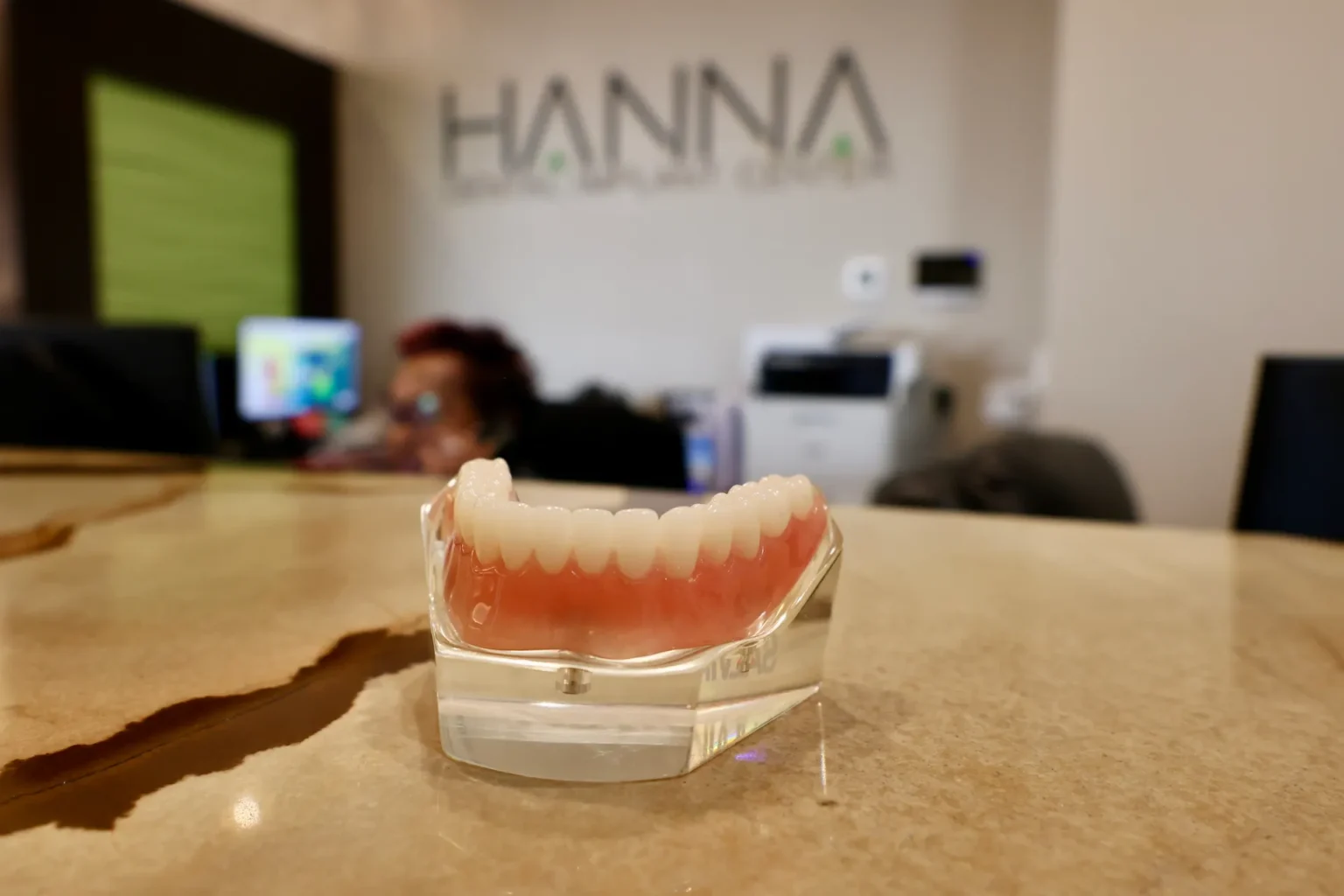Have you ever experienced a sharp, unexpected toothache while jumping, skipping, or engaging in other high-impact activities? This discomfort is not only startling but can significantly affect your daily life and well-being. Tooth sensitivity triggered by such movements can turn simple joys like playing sports or even casual jogging into painful endeavors.
This article will discuss why these physical activities trigger tooth sensitivity.
Causes of Toothache When Jumping
Understanding the root causes of toothache during physical activities like jumping is crucial. This pain isn’t just an inconvenience; it’s a signal from your body that something isn’t right.
Knowing these causes is the first step towards effective treatment and prevention, ensuring oral health doesn’t hinder your active lifestyle. Here are some of the most common causes of toothache when jumping or exercising:
Microfractures or Cracks in Teeth
High-impact activities like jumping can cause tiny cracks or microfractures in your teeth. These minute damages are often hard to detect but can lead to significant discomfort. Each jump can send shockwaves through your teeth, aggravating these small fractures and resulting in sharp pain.
Exposed Tooth Roots from Gum Recession
Gum or periodontal recession exposes the roots of your teeth, making them more sensitive to movement and pressure. Jumping can intensify this sensitivity, leading to a painful response. Receding gums are always a sign of other oral health issues, such as periodontal disease, which require immediate attention.
Tooth Decay and Cavities Aggravated by Jumping
Cavities and tooth decay weaken the structure of the teeth. When you jump or engage in similar physical activities, the additional force exerted can irritate these weakened areas, causing pain. This is especially true for cavities close to the tooth’s nerve, where the impact can stimulate a painful reaction.
Sinus Issues
For some, tooth pain during physical activities like jumping may actually stem from sinus problems. The sinuses are close to the upper teeth, and when they become inflamed or infected, it can cause pain that feels like it’s in the teeth.
Bruxism or Teeth Grinding
Regular teeth grinding, especially during stressful periods, can weaken teeth and make them more susceptible to pain during high-impact activities. The added stress on already weakened teeth can lead to discomfort when jumping.
Dental Restorations and Orthodontic Appliances
Existing dental work, like fillings or braces, can sometimes become sensitive to the motion and impact of jumping. This can be due to the movement of these restorations or the pressure they exert on the surrounding teeth.
Changes in Blood Flow
Intense physical activity alters blood flow, which can increase tooth sensitivity or pain, especially if underlying dental issues exist.
Temperature Sensitivity
Exposure to cooler air while jumping or exercising outdoors can trigger teeth sensitivity, particularly if conditions like thin enamel or exposed roots exist.
Understanding these causes is essential for identifying effective treatment and preventive measures, helping you maintain oral health and enjoy an active lifestyle.
Solutions for Relieving Toothache When Jumping

When it comes to addressing toothaches induced by jumping, traditional dental solutions can be quite effective. Here’s a breakdown of common treatments:
Desensitizing Toothpaste and Mouthwash
These products contain ingredients that help block the transmission of pain signals from the tooth surface to the nerve. Regular use can gradually reduce sensitivity.
Fluoride Treatments and Varnishes
Applied by dentists, these treatments help strengthen tooth enamel and reduce sensitivity. They provide a protective barrier for sensitive areas of your teeth.
Dental Fillings or Bonding for Cavities
If cavities are the cause of your toothache, dental fillings or bonding can repair the decayed areas, alleviating the pain caused by jumping.
Dental Crowns or Mouthguards
Dental crowns can protect teeth that have extensive damage or are prone to injury during physical activity. Mouthguards, especially custom-made ones, can shield your teeth from impact while engaging in high-impact activities.
These solutions can offer significant relief, but it’s important to consult a dentist to choose the right one for your specific condition.
Limitations of Traditional Toothache Solutions
While traditional methods can be effective in relieving toothache during activities like jumping, they also have their limitations:
Temporary Relief
Many traditional treatments, such as desensitizing toothpaste, offer only temporary relief. They need to be used consistently and might not address the underlying cause of the toothache.
Inefficacy in Severe Cases
These solutions might not be adequate in severe sensitivity or tooth damage cases. They are more of a symptom management approach rather than a cure.
Challenges During High-Impact Activities
Protecting teeth during intense physical activities like jumping can be challenging. Solutions like mouthguards are helpful but might not be convenient or comfortable for all activities.
Understanding these limitations is important when considering the best approach to treating and managing tooth sensitivity and pain.
Dental Implants as a Permanent Solution to Tooth Sensitivity
Dental implants offer a long-term solution to toothaches caused by activities like jumping. Unlike traditional methods, implants replace damaged or missing teeth with artificial ones that replicate the look and function of natural teeth.
They work by anchoring a titanium post into the jawbone, which is a stable base for the artificial tooth. This process addresses the immediate tooth sensitivity issue and helps maintain oral health. Implants can withstand the pressures of high-impact activities, providing a durable and comfortable solution for those who lead active lifestyles.
Here is why dental implants are a permanent solution for tooth sensitivity:
- Replace damaged or missing teeth, mimicking natural tooth function.
- Anchored into the jawbone for stability, suitable for high-impact activities.
- Durable and comfortable, reducing the risk of further oral damage.
- Restore full chewing and biting capabilities without sensitivity.
- Maintain oral health by preventing bone loss and preserving jaw structure.
- Offer a long-lasting solution compared to temporary treatments.
Dental Implant Procedure
Initial Consultation and Comprehensive Oral Examination
Dental implants begin with a thorough examination of your oral health. During the first consultation, your dentist evaluates your teeth, gums, and jawbone. They discuss your medical history and any current dental issues to ensure implants are a suitable option.
Detailed Treatment Planning
After confirming your eligibility, your dentist creates a customized treatment plan. This involves assessing the density of your jawbone and the positioning of adjacent teeth. Advanced imaging techniques may be used to map out the precise location for implant placement.
Surgical Placement of the Implant
The implant surgery involves inserting a titanium post into the jawbone. This procedure is performed under local anesthesia to ensure comfort. The titanium post serves as an artificial root, providing a sturdy base for the new tooth. In some cases, depending on various factors like bone density and overall oral health, this procedure can be completed in a single day, known as “same-day implants.”
Osseointegration—The Fusion Process
A critical phase in the implant process is osseointegration, where the titanium post integrates with the jawbone. While the jawbone can take some time, up to several months, to fully integrate the implant, modern implant centers are able to still complete your implant, with either a temporary or permanent crown, in just one day.
Restorative Phase—Adding the Dental Crown
The last step involves placing the dental crown once osseointegration is complete. The crown is designed to match your natural teeth’ color, shape, and size, providing a seamless and aesthetic finish. The crown is then securely attached to the implant, restoring full functionality and appearance.
This multi-step process ensures that dental implants are a safe, effective, and long-lasting solution to missing teeth and sensitivity, enhancing both the health and aesthetics of your smile.
Why Choose Hanna Dental Implant Center for Tooth Sensitivity Concerns
Hanna Dental Implant Center stands out for its expertise and personalized approach to dental implantology. Here’s why choosing them can be beneficial:
- Expertise in dental implants
- All patients receive a treatment plan tailored to their needs, ensuring the best possible outcome.
- The clinic employs state-of-the-art technology for precise and efficient implant placement.
- Our team of dental experts is experienced and highly trained in the field of implantology.
- We are committed to ensuring patient comfort throughout the treatment process and strive for complete patient satisfaction with the results.
Choosing Hanna Dental Implant Center means opting for a team that values your well-being and utilizes the latest advancements in dental care to address tooth sensitivity and other dental concerns. Contact us today to schedule your consultation.
Frequently Asked Questions
Why do my teeth hurt when I do physical activity?
Physical activity increases blood flow and causes pressure changes in the mouth. This can amplify existing dental problems or sensitivities. Activities like running or jumping can exert extra force on your teeth, triggering pain in areas with cavities, weakened enamel, or gum disease. It’s also possible for intense physical exertion to exacerbate pain from pre-existing conditions like tooth decay or gum inflammation.
Why does my tooth hurt when I move?
Movement, particularly high-impact activities like jumping, adds stress to your teeth. This can aggravate existing dental conditions such as cavities, gum disease, or even microfractures in the teeth. Teeth with these issues might respond to the additional pressure and movement with pain or discomfort. It’s important to monitor such symptoms as they can indicate underlying dental health problems that require attention.
Why does my tooth hurt when I dive?
Diving subjects the body to rapid pressure changes, which can affect the teeth, especially if dental issues like cavities or microcracks exist. The change in pressure can cause discomfort in these weakened areas. Additionally, sinus pressure changes, a common occurrence in diving, can lead to tooth pain, as the sinus cavities are located near the upper teeth. This pain might feel like it’s emanating from the teeth when it’s actually related to sinus pressure.



